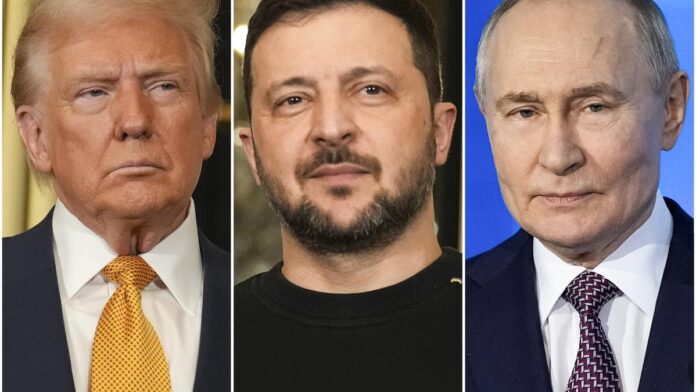U.S. President Donald Trump has announced plans for a high-profile three-way meeting with Russian President Vladimir Putin and Ukrainian President Volodymyr Zelensky — potentially within hours of his scheduled Alaska summit with Putin on Friday. The goal: to broker an end to the grinding three-year war in Ukraine.
The proposal, delivered to reporters after what Trump described as a “perfect” call with European leaders and Zelensky, comes at a precarious moment. Russian forces have just made their largest single-day advance into Ukraine in over a year, according to battlefield data from the Institute for the Study of War.
“If the first one goes okay, we’ll have a quick second one… between President Putin, President Zelensky and myself, if they’d like to have me there,” Trump said.
High Stakes, Limited Trust
The Anchorage meeting will be Trump’s first direct engagement with Putin since taking office in January 2025, and it carries enormous stakes. Zelensky and European allies have pressed Trump to push for an immediate ceasefire, wary that a U.S.–Russia deal could force territorial concessions from Kyiv.
Trump has previously promised to end the conflict “on day one” of his presidency, yet his efforts so far have yielded little. His threat to impose secondary sanctions on Russia’s trading partners passed without action last week, undermining perceptions of leverage.
The president was blunt about the conditional nature of his follow-up summit:
“There may be no second meeting… if I didn’t get the answers that we have to have.”
Europe Pushes for Unity, Ukraine Remains Skeptical
In a conference call that included German Chancellor Friedrich Merz, NATO Secretary-General Mark Rutte, and European Commission President Ursula von der Leyen, leaders urged Trump to maintain a united front. Zelensky joined from Berlin, stressing that “Putin does not want peace.”
Merz signaled Ukraine’s readiness to negotiate “on territorial issues,” but ruled out any legal recognition of Russian occupations. Von der Leyen declared that Europe, the U.S., and NATO had “strengthened the common ground for Ukraine.” Rutte added: “The ball is now in Putin’s court.”
Trump, for his part, downplayed expectations:
“This is really a feel-out meeting a little bit… there’ll be some swapping, there’ll be some changes in land.”
Moscow’s Dismissal and Battlefield Realities
The Russian Foreign Ministry dismissed the flurry of diplomacy as “politically and practically insignificant” — framing it as an attempt to “sabotage” U.S.–Russia efforts to resolve the conflict.
On the ground, however, Russia’s momentum is unmistakable. The AFP analysis found that on August 12, Russian forces seized or claimed 110 square kilometers of territory, the largest single-day gain since May 2024.
In Kramatorsk, just 20 kilometers from the front, Ukrainian soldiers expressed little faith in the Anchorage talks. Artem, a 30-year-old serviceman, warned:
“Putin is massing an army, he is stockpiling weapons, he is pulling the wool over our eyes.”
Diplomacy is most effective when backed by credible leverage. Trump’s Alaska summit could, in theory, open a path to a ceasefire. But with Russia advancing on the battlefield and Ukraine excluded from the first meeting, the optics risk tilting toward Moscow. History shows that in conflicts where one side feels it is winning militarily, diplomatic settlements often serve to consolidate gains rather than roll them back.
The real test will be whether Trump can translate his trademark deal-making bravado into an agreement that satisfies both Ukraine’s sovereignty and Russia’s strategic calculus — without sacrificing the credibility of the West’s collective stance.








